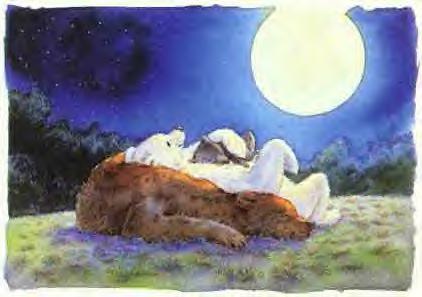
Canku Ota

(Many Paths)
An Online Newsletter Celebrating Native America
September 20, 2003 - Issue 96
![]()
"niyáwë skênö"
The Mingo Greeting
This phrase means hello, how are you?, how do you do?, good, well, or just fine.

Moonlight
Bears
"NASANMUYAW"
Full Harvest Moon
Hopi
![]()
"We only ask
to survive so that we can remain who and what we are - and for that we
will always thank the Creator. We ask only the chance to pass on our way
of life and our love for the Creator to our children and grandchildren."
Harriett Starleaf Gumbs
Shinnecock
![]()



